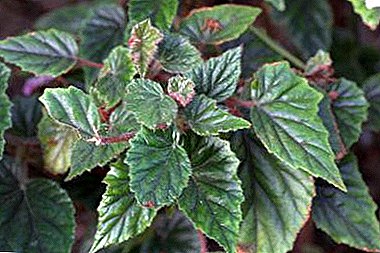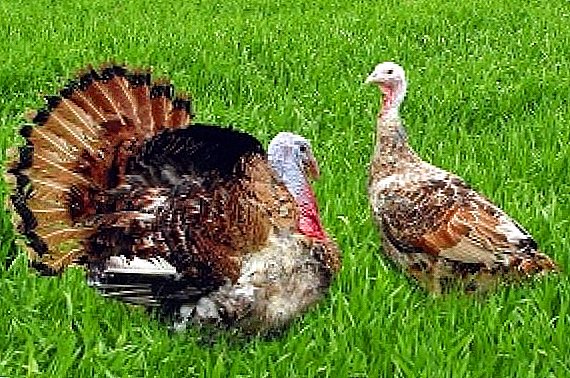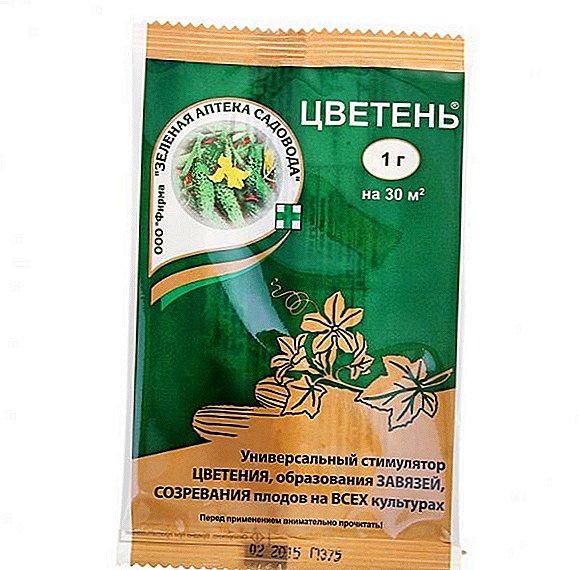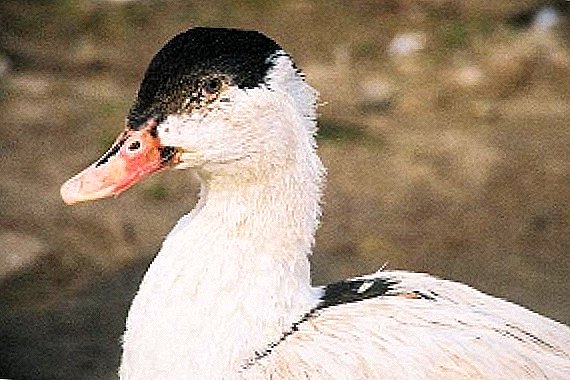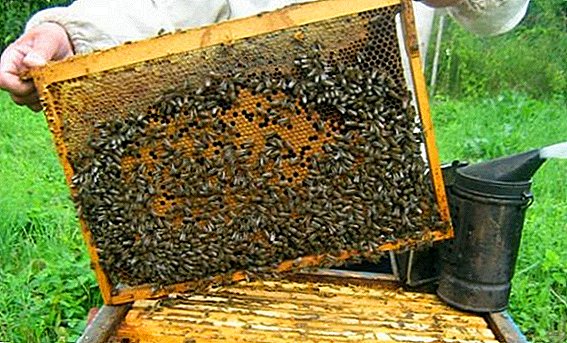 If the rabbit has reddened eyelids and tears are flowing, then, most likely, he has contracted conjunctivitis. This disease often affects furry pets. They are especially vulnerable with improper care and lack of vitamins, so all breeders need to be aware of this ailment. Consider the causes of the disease, methods of treatment and prevention.
If the rabbit has reddened eyelids and tears are flowing, then, most likely, he has contracted conjunctivitis. This disease often affects furry pets. They are especially vulnerable with improper care and lack of vitamins, so all breeders need to be aware of this ailment. Consider the causes of the disease, methods of treatment and prevention.
What is dangerous conjunctivitis for rabbits
Conjunctivitis is called inflammation of the mucous membrane of the eye. The illness begins with the discomfort caused by tearing, and the general lethargy of the animal. But if you do not take the necessary measures in time, the disease can lead to dangerous consequences.
Did you know? The rabbit has amazing eyes: he can see what is happening behind him without turning his head.These include:
- purulent conjunctivitis, in which the mucous form passes: abundant discharge of pus, eating away the hair and skin around the eyes and cheeks, the formation of painful ulcers and the adhesion of the eye with pus;
- keratitis, in which the cornea of the eye and the inner surface of the eyelid become inflamed, which causes pain and leads to clouding and loss of vision, and subsequently to leakage of the eye;
- encephalitis, that is, inflammation of the central nervous system, which carries a threat to life;
- infection of the rest of the rabbit population in the infectious form of conjunctivitis.

Causes of the disease
You can not treat a rabbit without determining why his eyes are red and watery. Methods of treatment of conjunctivitis depend on the cause of its occurrence, so it is very important to first establish the cause of the disease, and then begin to fight it.
Familiarize yourself with the symptoms, methods of treatment and prevention of rabbit diseases.
Mechanical stimuli
The eye has natural protection from foreign objects from the outside: it is the conjunctiva, the thinnest film that covers the back of the eyeball and gives off tears to flush debris out of the eye.
Combining the eyeball with the eyelid, it forms a kind of bag, the entrance to which is open from the eye slit. If the influx of debris is constant, the tear ducts do not cope with it. Small grains of sand inside the conjunctive sac cause microtraumas.  Because of this, inflammation of the conjunctiva develops, that is, conjunctivitis. Foreign objects that can get into the rabbit's eye are dust (construction and ordinary), particles of hay, compound feed, sawdust, wool, dirt, faeces, insects and other garbage.
Because of this, inflammation of the conjunctiva develops, that is, conjunctivitis. Foreign objects that can get into the rabbit's eye are dust (construction and ordinary), particles of hay, compound feed, sawdust, wool, dirt, faeces, insects and other garbage.
The eye can also become inflamed due to injury: a blow, a scratch, a sharp spike, a bite. At risk are animals that are poorly cared for. If a cell is irregularly removed and drafted, the likelihood of a disease increases.
Did you know? For a rabbit, there is an absolutely invisible zone in front: from the tip of the nose and down. He literally does not see what is happening under his nose.
Chemical irritants
Rabbit eyes are very sensitive to chemical stimuli.
It can be:
- various aerosols: perfumes, tick and flea products, cell disinfectants;
- cigarette smoke and fire;
- strongly smelling substances: household chemicals (acid, alkali), pet bathing shampoo, grooming cosmetics;
- ammonia smell from the rabbit's own urine or from the feces of other animals;
- medication.
 Small particles of an aerosol or gas, getting to the surface of the conjunctiva, irritate it and cause inflammation. Strong odors reduce immunity and can even provoke an allergic reaction.
Small particles of an aerosol or gas, getting to the surface of the conjunctiva, irritate it and cause inflammation. Strong odors reduce immunity and can even provoke an allergic reaction.Bacterial and viral infections
Frequent causes of the disease are different pathogenic microbes.
These include:
- viruses (adenovirus, herpes);
- bacteria (chlamydia, staphylococcus, streptococcus);
- fungi.
These microorganisms can get into the eye with dust and for some time exist in it without harming the rabbit. While the animal is healthy, its immune system fights against germs. As soon as for some reason the immune system weakens, the harmful bacteria begin to multiply actively, leading to inflammation of the conjunctiva.
Malnutrition
In order for the conjunctiva to function normally, the rabbit must constantly replenish its body with vitamins A, E and C.
Important! Carotene is destroyed over time, so the longer the food is stored, the less vitamin A it contains.Especially important is vitamin A, the source of which is carotene.
 If the pet has a monotonous diet and there is not enough carotene in it, this has a bad effect on the mucous membrane of the eyes: it becomes inflamed, dryness appears, cracks and ulcers form.
If the pet has a monotonous diet and there is not enough carotene in it, this has a bad effect on the mucous membrane of the eyes: it becomes inflamed, dryness appears, cracks and ulcers form.Carotene rich menu:
- summer and autumn - carrots with tops, grass, properly harvested hay, cabbage, beans, germinated cereals;
- in the winter - silo from the listed ingredients;
- concentrated feed with the necessary content of vitamin A.
It will be useful for you to find out whether it is possible to give nettle, bread, cereals, bran, burdock and wormwood to rabbits, what to feed rabbits with, and what grass to feed rabbits.
Infection from other parts of the body
Often the conjunctiva is inflamed due to the penetration of harmful microbes from other closely located organs into the eyes.
The cause may be untreated infectious diseases:
- ears (otitis);
- nose (rhinitis);
- oral cavity (stomatitis).

Late treatment of these diseases necessarily provokes inflammation of the mucous membrane of the eye.
How to detect conjunctivitis: symptoms
At the beginning of the development of the disease, it is difficult to notice its signs. But it is very important to pay attention to any slight reddening of the eyes and the slightest changes in the behavior of rabbits and adults. If you detect conjunctivitis at an early stage, it is easier to cure, you can avoid complications and infection of the entire population.
Symptoms of the initial stage of the disease:
- redness and swelling of the eyelids, discharge of tears;
- the animal loses its appetite and activity, scratches its eyes with its paws, hides from the light, clogs itself in a corner.
Find out what rabbit diseases threaten human health.
In the absence of treatment, the disease develops and turns into more complex forms:
- catarrhal (mucous) form: the lacrimation increases, the swelling of the eyelids and mucosa increases, the redness spreads to the skin around the eyes, tears are visible on the hair;
- purulent form: tears are mixed with purulent secretions, the conjunctiva swells more, pus accumulates in the corners of the eyes and glues the cilia, ulcers form on the eyelids;
- phlegmonous form, which is characterized by a strong swelling of the mucous membrane, which bulges in the form of a roller;
- follicular form, when follicles grow on the inner surface of the third century.
 With further complications, keratoconjunctivitis develops, which adds inflammation of the cornea.
With further complications, keratoconjunctivitis develops, which adds inflammation of the cornea.Treatment of conjunctivitis at home
As soon as some of the listed symptoms were noticed in the rabbit, it is necessary to act immediately. The sick animal should be isolated from others and the cell should be disinfected with chlorhexidine solution.
Then you need to wash the diseased eyes: pink solution of potassium permanganate, 2% solution of boric acid or furatsilinom (dissolve 1 tablet in 100 ml of hot water and cool).
Read more about how to choose a rabbit when buying, at what age rabbits shed and how to care for them, as well as what affects the lifespan and how long the rabbits live on average.
Washing will help clear the eyes of secretions and pathogens. After that, the affected rabbit must be shown to the veterinarian, who will make an accurate diagnosis. Methods of treatment depend on the form of conjunctivitis.
Acute form
The acute form is easier and faster to treat. It consists of three stages: washing, instillation and application of ointment.  Antiseptic washing agents:
Antiseptic washing agents:
- potassium permanganate solution (2 crystals per glass of water);
- boric acid (2% solution);
- furatsilina solution;
- decoction of chamomile or calendula;
- Rivanol solution;
- Albucid (3% solution).
- boric;
- iodoform;
- hydrocortisone.
- zinc sulfate (warm 0.5% solution) and other zinc eye drops;
- Albucid (20-30% solution);
- eye drops for dogs and cats (Tsiprovet, Iris).
Treatment regimen: washing with antiseptics - 3 or 4 times a day, after each washing - instilling 2-3 drops in each eye, then applying ointment. Under the eyelid, a little ointment is placed with a cotton swab, after which the outer side of the eyelid is massaged with a finger to distribute the medicine all over the eye. The course of treatment is 7 days. 
Purulent conjunctivitis
Treatment of a purulent form follows the same pattern (washing, instillation, applying ointment). For washing using the same means as in the catarrhal form.
The difference is that antibacterial and antiviral medications are used. In addition, if the eye is closed with a purulent crust, it should be soaked with lotion from a solution of boric acid. Only then can the washing be started.
Drops recommended by doctors:
- antibacterial: Gentamicin, Levomitsetin, Tsiprolet, Albucid;
- antiviral: Aktipol, Trifluridin.
We recommend to get acquainted with the top 10 interesting facts about rabbits.
Ointment:
- antibiotics: Tetracycline, Ofloxacin, Olethetrin;
- antiviral: oxolinic, Florenal.
Which means to choose for treatment, antibacterial or antiviral, decides the veterinarian after determining the cause of the disease. In case of complications, the doctor prescribes additional antibiotic injections.  The inflamed and bald skin near the eyes must also be washed and apply boric or iodoform ointment on it. As with the acute form, medical procedures are carried out 3-4 times a day for 5-7 days.
The inflamed and bald skin near the eyes must also be washed and apply boric or iodoform ointment on it. As with the acute form, medical procedures are carried out 3-4 times a day for 5-7 days.
Important! If conjunctivitis is not treated, then it will go into a chronic form, which is more difficult to cure.
Preventive measures
To protect pets from an unpleasant and painful disease, you need to adhere to basic veterinary and sanitary norms and proper nutrition.
These include:
- keeping the cell clean;
- daily tray cleaning;
- regular disinfection of cells and inventory;
- lack of sharp objects in the cage;
- lack of draft;
- avoid spraying perfumes and household chemicals near rabbits;
- balanced nutrition rich in vitamin A;
- regular vaccination.
 Conjunctivitis, unlike other rabbit diseases, is freely treatable. It is important for rabbit breeders to be aware of this common ailment, adhere to preventive rules and keep a close eye on their pets in order to detect the first signs of infection in time. This is the only way rabbit rearing will be successful.
Conjunctivitis, unlike other rabbit diseases, is freely treatable. It is important for rabbit breeders to be aware of this common ailment, adhere to preventive rules and keep a close eye on their pets in order to detect the first signs of infection in time. This is the only way rabbit rearing will be successful.Reviews from the network



